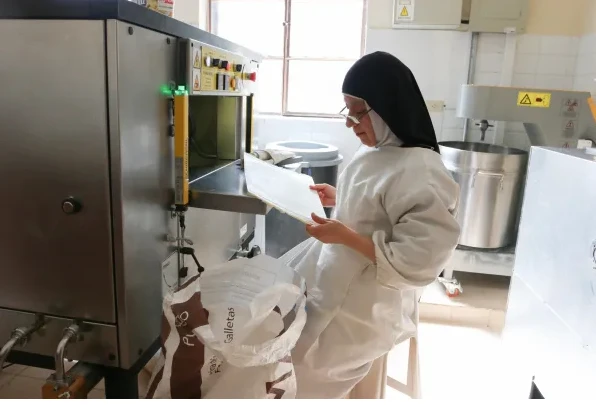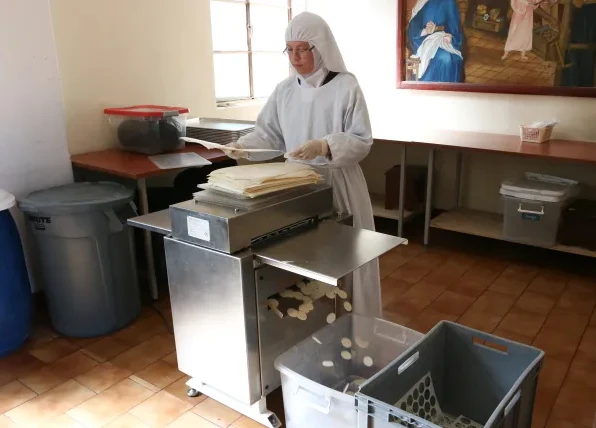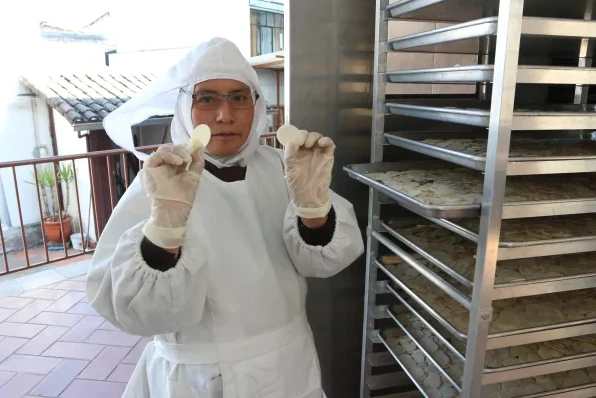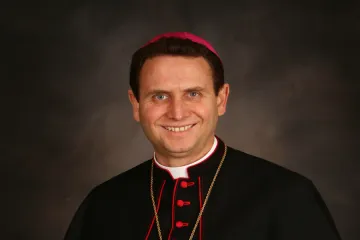Quito, Ecuador, Sep 11, 2024 / 12:05 pm
Some 65,000 hosts, which are being consecrated in the Masses celebrated during the 2024 International Eucharistic Congress in Quito, Ecuador, could not have come from a better place: the home of Ecuador’s first saint, St. Mariana of Jesus. The home was converted into a Carmelite monastery a few years after the young woman’s death.
The Old Carmelite Monastery of San José, known as El Carmen Alto (“The Upper Carmel,” for its location), is located in the historic district of Quito, where the Ecuadorian saint lived from 1618 to 1645. The saint was a great devotee of St. Teresa of Jesus, the Carmelite mystic and reformer.
According to the historical account, the young Mariana de Jesús Paredes had expressed the desire for her home to become a Carmelite monastery. At present, the home is the residence of 21 nuns who in recent weeks have dedicated themselves to the task of completing 133 packages of 500 small hosts each and 130 packages of 25 medium-sized hosts each, in addition to the special large size.
“Making the hosts is bringing Jesus into our lives, bringing Jesus into the hearts of people,” Mother Verónica of the Holy Face, prioress of the Upper Carmel, told ACI Prensa, CNA’s Spanish-language news partner.
How are the hosts made?
The dough, made of wheat flour and water from which the hosts are made, first passes through a machine that forms sheets and the irregular edges are then removed by hand.

Afterward, the sheets are taken to a room to be moistened and then to another to dry in order to avoid lumps forming.
Then the sheets are fed into a cutting machine from which the small hosts are produced. From another come out the medium-sized hosts, which are used by the priests in the consecration. The cutting stage can take about three hours.

Finally, the hosts are placed on a table for the nuns to examine carefully and select only the perfect ones. The misshapen or broken ones are set aside for sale to the public.
In a normal batch, the Upper Carmel produces 70 packages of 400 hosts each, a total of 28,000, whose sales serve to support the nuns.

However, Mother Veronica clarified that “it’s not that we spend the whole day here.”
“In the morning, we do all the cooking, and now with the [International Eucharistic] Congress, the sisters are working a little more, so we are doing an extra hour of cooking, so that in the afternoon we can dedicate ourselves to studies, because each one has her own formation,” she explained.
We want people to know Jesus in the Eucharist
(Story continues below)
In her conversation with ACI Prensa, the prioress said that, at least in Ecuador, all the monasteries make hosts for their daily sustenance “and at the same time so that people can receive Jesus, because he is their food.”
“If he were not our food, what would become of us?” she asked.
The Carmelite nun commented that “unfortunately we do not realize the great value of the Eucharist” and the gift that it means to receive the Lord himself.
“Why are we experiencing so much confusion now? Because the soul has distanced itself from God,” she said, noting that “man, now more than ever, needs this spiritual nourishment.”
The prioress recalled that many saints were nourished only by the Body of Christ, as was the case of St. Mariana de Jesus, “our first Ecuadorian saint.”
“She, precisely in the last few months, was not eating anything at all, according to the historical account.” She was “a Eucharistic soul who attended the Jesuits’ holy Mass every day to receive the body and blood of Christ,” the nun related.
The Carmelite said that Jesus “remained, above all, to accompany us in the Blessed Sacrament,” so that we go “to him where he is as a friend, a brother who is at our side and who tells us, as Martha would say to Mary: The Master is there, he is calling you.”
“He is calling us all day long for us to come. But what is happening? The churches, now more than ever, are empty, forgotten, the tabernacles abandoned. Before there were so many people looking for him.”
Instead, “what are we looking for now? Digital media,” she observed.
Mother Veronica explained that the nuns, “as women of contemplative life, more for our Carmelite spirit, what we want is this: to make him known, that they be able to receive him so that they feel that strength, and thus they can also gain much more.”
This story was first published by ACI Prensa, CNA’s Spanish-language news partner. It has been translated and adapted by CNA.







